Tag Archives: Data Science
Probability concepts, formulas & real-world examples

Probability is a branch of mathematics that deals with the likelihood of an event occurring. It is important to understand probability concepts if you want to get good at data science and machine learning. In this blog post, we will discuss the basic concepts of probability and provide examples to help you understand it better. We will also introduce some common formulas associated with probability. So, let’s get started! What is probability and what are the different types? Probability is a concept in mathematics that measures the likelihood of an event occurring. It is typically expressed as a number between 0 and 1, with 0 indicating that an event is …
Statistics – Random Variables, Types & Python Examples
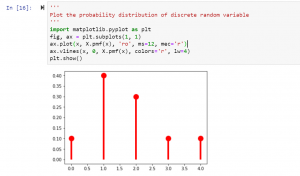
Random variables are one of the most important concepts in statistics. In this blog post, we will discuss what they are, their different types, and how they are related to the probability distribution. We will also provide examples so that you can better understand this concept. As a data scientist, it is of utmost importance that you have a strong understanding of random variables and how to work with them. What is a random variable and what are some examples? A random variable is a variable that can take on random values. The key difference between a variable and a random variable is that the value of the random variable …
How to Create Pandas Dataframe from Numpy Array
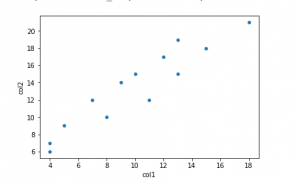
Pandas is a library for data analysis in Python. It offers a wide range of features, including working with missing data, handling time series data, and reading and writing data in different formats. Pandas also provides an efficient way to manipulate and calculate data. One of its key features is the Pandas DataFrame, which is a two-dimensional array with labeled rows and columns. A DataFrame is a table-like structure that contains columns and rows of data. Creating a Pandas DataFrame from a NumPy array is simple. In this post, you will get a code sample for creating a Pandas Dataframe using a Numpy array with Python programming. Step 1: Load …
Machine Learning Sklearn Pipeline – Python Example
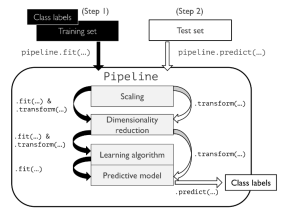
In this post, you will learning about concepts about machine learning (ML) pipeline and how to build ML pipeline using Python Sklearn Pipeline (sklearn.pipeline) package. Getting to know how to use Sklearn.pipeline effectively for training/testing machine learning models will help automate various different activities such as feature scaling, feature selection / extraction and training/testing the models. It is recommended for data scientists (Python) to get a good understanding of Sklearn.pipeline. Introduction to Machine Learning Pipeline & Sklearn.pipeline Machine Learning (ML) pipeline, theoretically, represents different steps including data transformation and prediction through which data passes. The outcome of the pipeline is the trained model which can be used for making the predictions. …
Sample Dataset for Regression & Classification: Python
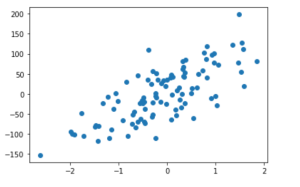
A lot of beginners in the field of data science / machine learning are intimidated by the prospect of doing data analysis and building regression (linear) & classification models in Python. But with an ability to create sample dataset using Python packages, you can practice your skills and build your confidence over a period of time. The technique demonstrated in this blog post to create and visualize / plot the sample dataset includes datasets that can be used for regression models such as linear regression and classification models such as logistic regression, random forest, SVM etc. You can use this technique to explore different methods for solving the same problem. …
Knowledge Graph Concepts & Machine Learning: Examples
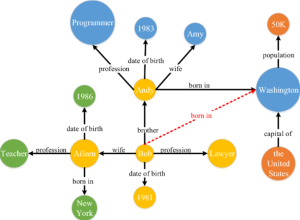
Knowledge graphs and machine learning are two important tools for understanding and making decisions in business. Knowledge graphs can be used to understand and model complex concepts, while machine learning is a process by which computers learn from data, without being explicitly programmed. Together, these two tools can be used to make better decisions in business by understanding the relationships between data points. In this blog, you will learn about the basics of knowledge graphs and machine learning, and how they can be used to improve decision making in business. What is a Knowledge Graph & how they can are used? A knowledge graph is a collection of data that …
AI / Machine learning (ML) Model Governance Framework

AI / Machine learning (ML) based solutions / applications have become increasingly important in business and industry. However, with the power to make decisions that can impact people’s lives comes a responsibility to use those tools ethically and responsibly. The machine learning model governance framework is designed to help businesses do just that. In this blog, you will learn about the AI / Machine Learning Model Governance framework, its benefits, and how you can implement it in your organization. What is AI / Machine learning (ML) model governance and why its important? Machine learning model governance is a set of process and related tools & frameworks that the businesses need …
Targeted Advertising & Machine Learning: Examples

Targeted advertising is nothing new. Businesses have been using targeted ads for years in order to try and increase sales. However, with the advent of machine learning, businesses are now able to target their ads more effectively than ever before. The importance of using machine learning for targeted advertising cannot be overstated. By using machine learning, businesses can target their ads more accurately and thus see a higher return on investment. This is because machine learning can take into account a variety of factors that humans would not be able to consider, such as browsing history and purchase history. As a business, it is important to stay ahead of the …
Linear Discriminant Analysis (LDA) Concepts & Examples
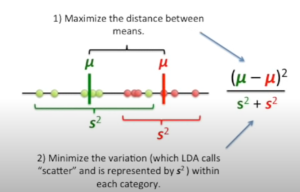
You may have heard of Linear Discriminant Analysis (LDA), but you’re not sure what it is or how it works. In the world of machine learning, Linear Discriminant Analysis (LDA) is a powerful algorithm that can be used to determine the best separation between two or more classes. With LDA, you can quickly and easily identify which class a particular data point belongs to. This makes LDA a key tool for solving classification problems. In this blog post, we will discuss the key concepts behind LDA and provide some examples of how it can be used in the real world! What is Linear Discriminant Analysis (LDA) and what are its …
100 Interview Questions for Deep Learning

If you’re looking for a job in deep learning, you’ll need to be prepared to answer some tough questions. In order to help you get started, we’ve put together a list of 100 interview questions for deep learning. While many of these questions are related to deep learning concepts, we have also listed several frameworks (Tensorflow, Pytorch, etc) related questions. By being prepared for these questions, you’ll be able to demonstrate your knowledge and expertise in this area, and increase your chances of landing the job! What is deep learning? How does machine learning differ from deep learning? What are the differences between shallow and deep learning? How does deep …
Building Data Analytics Organization: Operating Models
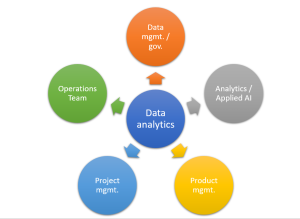
Most businesses these days are collecting and analyzing data to help them make better decisions. However, in order to do this effectively, they need to build a data analytics organization. This involves hiring the right people with the right skills, setting up the right infrastructure and creating the right processes. In this article, we’ll take a closer look at what it takes to set up a successful data analytics organization. We’ll start by discussing the importance of having the right team in place. Then we’ll look at some of the key infrastructure components that need to be put in place. Finally, we’ll discuss some of the key process considerations that …
Who is a Data Scientist? Test your Knowledge

Do you know what a data scientist is? You may think you do, but take this quiz to find out for sure! Data scientists are essential to modern business and it’s important to know who they are and what they do. This quiz is just for fun, but it’s also a great opportunity to learn more about one of the most in-demand professions today. So put your data scientist knowledge to the test and see how well you really know this profession! And, feel free to share your thoughts if you disagree with the answer of any of the questions. Here are a few related posts on this topic: What …
Interns – Machine Learning Interview Questions & Answers: Set 1

This page lists down first set of machine learning / data science interview questions and answers for interns / freshers / beginners. If you are an intern or a fresher or a beginner in machine learning field, and, you are looking for some practice tests before appearing for your upcoming machine learning interview, these practice tests would prove to be very useful and handy. Machine Learning topics covered in Test In this set, some of the following topics have been covered: Machine learning fundamentals (Supervised and unsupervised learning algorithms) Different types of machine learning problems and related algorithms with examples Concepts related with regression, classification and clustering Practice Test (Questions …
Data-centric vs Model-centric AI: Concepts, Examples
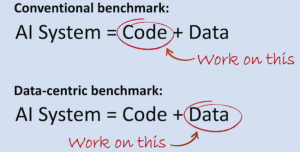
There is a lot of discussion around AI and which approach is better: model-centric or data-centric. In this blog post, we will explore both approaches and give examples of each. We will also discuss the benefits and drawbacks of each approach. By the end of this post, you will have a better understanding of both AI approaches and be able to decide which one is right for your business! As product managers and data science architects, you should be knowledgeable about both of these AI approaches so that you can make informed decisions about the products and services you build. Model-centric approach to AI Model-centric approach to AI is about …
Data Science Architect Interview Questions

In this post, you will learn about interview questions that can be asked if you are going for a data scientist architect job. Data science architect needs to have knowledge in both data science/machine learning and cloud architecture. In addition, it also helps if the person is hands-on with programming languages such as Python & R. Without further ado, let’s get into some of the common questions right away. I will add further questions in the time to come. Q1. How do you go about architecting a data science or machine learning solution for any business problem? Solving a business problem using data science or machine learning based solution can …
Decision Science & Data Science – Differences, Examples

Decision science and Data Science are two data-driven fields that have grown in prominence over the past few years. Data scientists use data to arrive at the truth by coming up with conclusions or predictions about things like customer behavior and assess suitability of those conclusions / predictions, while decision scientists combine data with other information sources to make decisions and assess suitability of those decisions for enterprise-wide adoption. The difference between data science and decision science is important for business owners to understand in clear manner in order to leverage the best of both worlds to achieve desired business outcomes. In this post, you will learn about the concepts …
I found it very helpful. However the differences are not too understandable for me